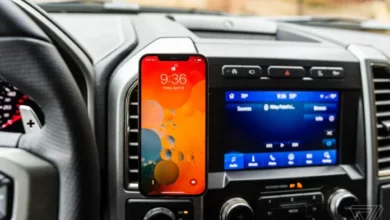Starlink: what you need to know

Starlink is a satellite constellation system that aims to deliver global internet coverage. This system is ideally suited for rural and geographically isolated areas where internet connectivity is unreliable or nonexistent.
The tech device is manufactured by Space Exploration Technologies Corp (SpaceX), a private rocket and spacecraft company founded by Elon Musk in 2002. SpaceX was created for a global broadband network, and it uses a constellation of Low Earth Orbit (LEO) satellites to provide high-speed internet services.
How does Starlink work?
Starlink operates on a satellite internet service technology that has existed for decades. Instead of using cable technology, such as fiber optics to transmit internet data, a satellite system uses radio signals through the vacuum of space. Ground stations broadcast signals to satellites in orbits, which in turn relay the data back to the Starlink users on Earth. Each satellite in the Starlink constellation weighs 573 pounds (259.91 kg) and has a flat body. One SpaceX Falcon 9 rocket can fit up to 60 satellites.
The goal of Starlink is to create a low latency network in space that facilitates edge computing on Earth. The challenge of creating a global network in outer space isn’t a small one, especially because low latency is an important demand. SpaceX has proposed a constellation of almost 42,000 tablet-size satellites circling the globe in low orbit to meet this demand. The CubeSats—miniature satellites commonly used in LEO—create tight network coverage, and their low Earth orbit produces low latency.

However, Starlink isn’t the only contender in the space race and has a few competitors, including OneWeb, HughesNet, Viasat, and Amazon. HughesNet has been providing signal coverage from 22,000 miles (35,405.57 kilometers) above the Earth since 1996, but Starlink follows a slightly different approach and presents the following improvements:
- Instead of using a couple of large satellites, Starlink uses thousands of small satellites.
- Starlink uses LEO satellites that circle the planet at only 300 miles (482.8 kilometers) above surface level. This shortened geostationary orbit improves internet speeds and reduces latency levels.
- The newest Starlink satellites have laser communication elements to transmit signals between satellites, reducing dependency on multiple ground stations.
- SpaceX aims to launch as many as 40,000 satellites in the near future, ensuring global and remote satellite coverage with reduced service outages.
- Starlink has the advantage of being part of SpaceX, which, in addition to launching Starlink satellites, also conducts regular partner launches. Other satellite internet providers may not be able to schedule regular satellite launches due to the high-cost factors involved.
How fast are Starlink’s internet speeds?
Starlink offers unlimited high-speed data through an array of small satellites that deliver up to 150 Megabits per second (Mbps) of internet speed. SpaceX plans to double this rate in the coming months.
According to a recent Speedtest by Ookla, Starlink recorded its fastest median download speed in the first quarter of 2022 at 160 Mbps in Lithuania. Starlink also clocked in at 91 Mbps in the U.S., 97 Mbps in Canada and 124 Mbps in Australia. Starlink in Mexico was the fastest satellite internet in North America, with a median download speed of 105.91 Mbps. The speed test further revealed that upload speeds have seen a downward curve of at least 33% in the U.S. — from 16.29 Mbps in the first quarter of 2021 to 9.33 Mbps in the second quarter of 2022.
According to Starlink’s website, it offers high speeds and latency as low as 20 milliseconds in most locations.
How much does Starlink cost?
Starlink offers the following three internet packages:
- Starlink Internet. This package is geared toward residential use and costs $110 per month plus a one-time charge for the hardware of $599.
- Starlink Business. The business package provides twice the antenna capability of the residential offering along with faster internet speeds. It costs $500 per month with a one-time equipment charge of $2,500.
- Starlink RV. In June 2022, the U.S. Federal Communications Commission authorized SpaceX to use Starlink with moving vehicles, including recreation vehicles, airlines, ships, and trucks. So, people on the road can now get access to the Starlink RV service for $135 per month plus $599 for the hardware.
To request service, a user must enter their address on Starlink’s website to check for service availability in their area. If the service isn’t available in their area, Starlink will provide an approximate date of when it will arrive. Most users stay on the waitlist for months, and most waitlists have been pushed into early 2023.
For those coverage areas where service is currently available, Starlink fills the service requests on a first-come, first-served basis. To reserve a spot for service, a customer can preorder Starlink through its website, which requires a refundable $99 deposit.
Where is Starlink available?
Starlink currently provides service to 36 countries with limited coverage areas. In the United States, the company plans to expand coverage to the rest of the continental U.S. by the end of 2023. Although a few countries, including Pakistan, India, Nepal and Sri Lanka, are marked as “Coming soon” on Starlink’s coverage map, Starlink has no current plans to offer services to several countries, including Russia, China, Cuba, and North Korea.
The coverage map on the company’s website shows where it offers Starlink.
How to connect to Starlink?
Once users subscribe to Starlink, they receive a Starlink kit that includes a satellite dish, a dish mount and a Wi-Fi router base unit. Starlink also comes with a power cable for the base unit and a 75-foot cable for connecting the dish to the router.
To use the service, Starlink customers must first set up the satellite dish to start receiving the signal and pass the bandwidth to the router. The company offers various mounting options for the dish, including for yards, rooftops, and home exteriors. There’s also a Starlink app for Android and Apple iOS that uses augmented reality to guide users in selecting the best location and position for their receivers.
Can you use Starlink in bad weather?
Starlink was designed with rugged weather conditions in mind. According to the company’s website:
“Designed and rigorously tested to handle a wide range of temperatures and weather conditions, Starlink is proven to withstand extreme cold and heat, sleet, heavy rain, and gale force winds — and it can even melt snow.”
Starlink uses LEO satellites and a phased array antenna to help keep its performance intact during extreme weather conditions. The following examines how well the Starlink satellite operates in various weather conditions:
Cloudy weather. A typical cloudy day won’t affect Starlink. However, storm clouds could affect the signals, as they tend to create rain, which may cause signal interruptions. Storm clouds are also moister and denser, which can play a big part in the degradation of a satellite signal.
Rain. Light rain generally doesn’t cause issues, but a heavy downpour can affect the Starlink signal quality. Heavy rain is associated with thick, dense clouds. The denser the clouds are, the higher the chances that the radio signals coming to and from the Starlink satellites could get blocked.
Winds. A properly secured and mounted Starlink dish that doesn’t sway or move won’t be affected by strong winds. The Starlink dish comes with a phased array antenna that can track satellites flying overhead without the need to move physically. This also helps prevent signal interruptions.
Snow. Light snowfall shouldn’t affect the Starlink signals, but heavy snow can affect performance due to the moisture buildup. Starlink dish comes with a heating function that melts the snow automatically, but if the snow buildup is on top of the dish, it might need to be cleaned out manually to avoid signal issues.
Sleet and ice. Similar to rain and snow, heavy sleet and ice could also negatively affect the Starlink signals. The heating function automatically melts ice and snow, but a heavy icing or sleet event would require manual intervention for cleaning the dish.
Fog. Normal fog shouldn’t affect Starlink’s signal, but dense fog could cause signal loss or interruptions. Heavy fog carries a lot of moisture and can be dense enough to interrupt the signal.
How many Starlink satellites are in space?
As of July 24, 2022, SpaceX launched 53 satellites in what was the 33rd Starlink launch of 2022. This follows a successful launch on July 22, 2022, in which 46 Starlink satellites were sent into orbit. So far, the company has launched almost 3,000 satellites in low Earth orbit.
Source: TechTarget

This article is published by either a staff writer, an intern, or an editor of TheAfricanDream.net, based on editorial discretion.





